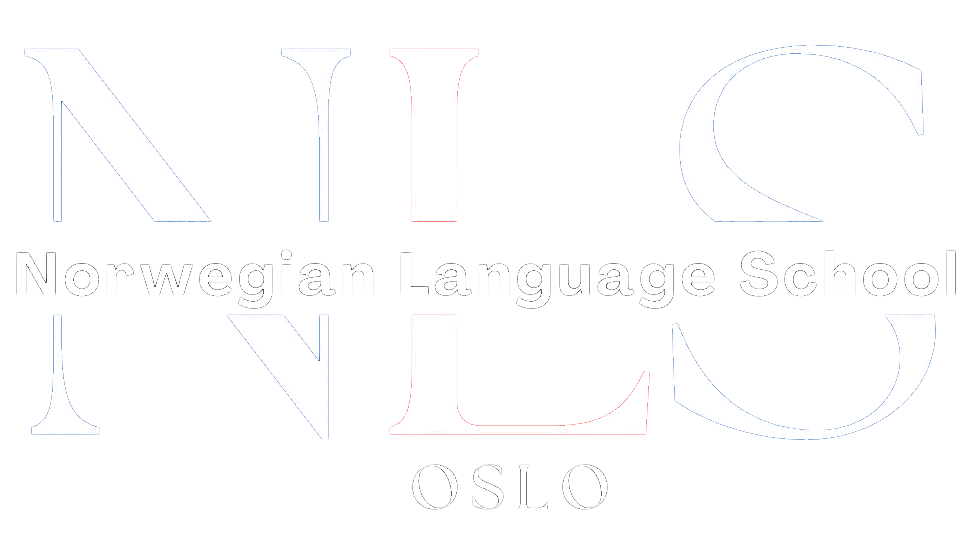

Learn Norwegian Basics Quickly & Easily
Are you ready to embark on a journey to learn the Norwegian language? Whether you have dreams of exploring the beautiful fjords of Norway, connecting with your Norwegian heritage, or enhancing your career opportunities, mastering the basics of the language is the first step towards fluency.
In this article, we will guide you through the process of learning Norwegian basics quickly and easily. From beginner Norwegian language courses to essential grammar rules and conversational skills, we will equip you with the tools you need to start your language learning journey.
So, are you ready to immerse yourself in the magical world of the Norwegian language? Let’s dive in and discover the secrets to mastering Norwegian basics!
Table of Contents
ToggleWhy Learn Norwegian? A Gateway to Scandinavian Culture
Learning Norwegian goes beyond acquiring a new language; it is a doorway to understanding and immersing oneself in Scandinavian culture. By exploring the Norwegian language, learners gain valuable insights into the rich heritage and traditions of the Nordic region.
One of the key benefits of learning Norwegian is the ability to communicate with Norwegians in their native language. This opens up opportunities for meaningful interactions and deeper connections with the local people when visiting Norway or engaging with Norwegians abroad.
Additionally, learning Norwegian can provide a foundation for understanding other Scandinavian languages. Norwegian shares similarities with Swedish and Danish, making it easier to grasp these languages as well. This linguistic interconnectedness enhances language learning capabilities and broadens communication skills across the entire Scandinavian region.
Setting Realistic Goals for Learning Norwegian
When embarking on the journey to learn Norwegian, it is important to set realistic goals that will guide your progress and keep you motivated along the way. Defining your motivation and learning objectives will help you stay focused and committed to achieving fluency in this beautiful language.
To set realistic goals, there are a few key tips to keep in mind.
- Identify your motivation: Understand why you want to learn Norwegian. Whether it’s for personal enjoyment, career opportunities, or connecting with Norwegian-speaking friends and family, knowing your motivation will help you stay motivated and focused.
- Define your learning objectives: What specific language skills do you want to achieve? Is it conversational proficiency, reading comprehension, or writing fluency? Clearly define your learning objectives to tailor your study plan accordingly.
- Create a timetable for success: Break down your goals into smaller, achievable milestones. Set a realistic timeline for reaching each milestone and create a study schedule to ensure consistent progress.
- Track your progress: Monitor your progress regularly by keeping track of the topics and skills you’ve mastered. This will help you stay motivated and provide a sense of accomplishment as you see your language skills improve.
While learning a new language can be challenging at times, it is important to remember that language acquisition takes time and effort. Be patient with yourself and embrace the journey of learning Norwegian. With perseverance and dedication, you will be able to achieve your language learning goals and communicate confidently in Norwegian.
The Alphabet and Pronunciation: Your First Steps in Norwegian
Learning the Norwegian alphabet and pronunciation rules is the first step towards mastering the language. Understanding the intricacies of Norwegian pronunciation will help you communicate effectively and be understood by native speakers. Let’s explore the Norwegian alphabet and discover the unique features of its pronunciation.
The Norwegian Alphabet:
| Letter | Pronunciation |
|---|---|
| A/a | ah |
| B/b | beh |
| C/c | seh |
| D/d | deh |
| E/e | eh |
| F/f | eff |
| G/g | geh |
| H/h | haw |
| I/i | ee |
| J/j | yot |
| K/k | kaw |
| L/l | ehll |
| M/m | emm |
| N/n | enn |
| O/o | oh |
| P/p | peh |
| Q/q | kvoo |
| R/r | err |
| S/s | ess |
| T/t | teh |
| U/u | oo |
| V/v | vay |
| W/w | dooblahvay |
| X/x | eks |
| Y/y | ewai |
| Z/z | sehdt |
The Norwegian alphabet consists of 29 letters, including the three additional letters in the end (27, 28, 29)
27. Æ/æ
Æ, æ: /æ/ This letter sounds like the “a” in “cat”.
Ø, ø: /ø/ – a rounded “e” sound, similar to the French “eu” or German “ö.” Å, å: /oː/ – similar to the “o” in “boat,” but with a more open sound.
28. Ø/ø
Ø, ø: /ø/
This letter sounds similar to the French “eu” or German “ö.”
29. Å/å.
Å, å: /oː/
This letter sounds similar to “aw” in “law,” but with a slightly more open sound.
These additional letters represent unique sounds in the Norwegian language.
Pronunciation Tips:
“The Norwegian language has its own distinct sounds and pronunciation rules. Here are some tips to help you improve your Norwegian pronunciation:
- Master the vowel sounds: Norwegian has a variety of vowel sounds, including short and long vowels. Practice each vowel sound individually to ensure accurate pronunciation.
- Pay attention to consonant clusters: Norwegian often combines consonants together, creating clusters with unique pronunciation. Practice these clusters to become comfortable with the sounds.
- Listen to native speakers: A great way to improve your pronunciation is by listening to native Norwegian speakers. Mimic their pronunciation and rhythm to enhance your own skills.
Remember, practice makes perfect! Don’t be afraid to make mistakes. The more you practice, the better you will become at pronouncing Norwegian words and sentences accurately.”
Now that you have a solid understanding of the Norwegian alphabet and pronunciation rules, you’re ready to take your first steps towards speaking Norwegian with confidence. So, let’s dive into the basics of the language in the upcoming sections!
Learn Norwegian Basics: The Foundation of Conversational Skills
In order to become proficient in Norwegian, it’s crucial to first establish a solid foundation in the basics. This section will guide you through the essential components of learning Norwegian basics, including basic grammar rules and core vocabulary.
Basic Grammar Rules:
Understanding the fundamental grammar rules of Norwegian is key to constructing coherent sentences and engaging in conversations. Here are some essential grammar concepts to get you started:
- Sentence Structure: Learn about the word order in Norwegian sentences and how to properly construct subject-verb-object formations.
- Verb Conjugation: Familiarize yourself with the conjugation patterns of Norwegian verbs, including present tense forms.
- Noun Gender: Gain an understanding of noun gender and how it affects article and adjective agreement.
To help solidify your understanding of these grammar rules, practice using them in context with examples and exercises. This hands-on approach will aid in internalizing the concepts and applying them effectively in real-life situations.
Core Vocabulary:
Building a core vocabulary is essential for developing conversational skills in Norwegian. By learning and regularly using common words and phrases, you’ll be better equipped to engage in everyday conversations. Focus on gradually expanding your vocabulary in areas such as greetings, introductions, numbers, colors, and basic expressions.
Practice incorporating these words into sentences and conversations to improve your language fluency. Reinforcing vocabulary through repetition and exposure to authentic Norwegian materials, such as books, movies, and podcasts, will help solidify your grasp of the language.
| Table 5.1: Common Norwegian Phrases for Everyday Conversations | |
|---|---|
| Greetings: | Hello – Hei |
| Good morning – God morgen | |
| Good evening – God kveld | |
| Introductions: | My name is… – Jeg heter… |
| Nice to meet you – Hyggelig å møte deg | |
| Where are you from? – Hvor kommer du fra? | |
| Asking for Directions: | Excuse me, where is…? – Unnskyld meg, hvor er…? |
| Can you help me? – Kan du hjelpe meg? | |
| Expressions: | Thank you – Takk |
| I’m sorry – Unnskyld | |
| Please – Vær så snill |
Remember to practice these phrases in real-life situations whenever possible to enhance your conversational skills and pronunciation.
Essential Norwegian Phrases for Everyday Use
In your journey to learn Norwegian, it is essential to familiarize yourself with common phrases used in everyday conversations. These phrases will help you navigate various situations and communicate effectively with native speakers. Here is a list of essential Norwegian phrases that you can practice and use in real-life situations:
Greetings and Introductions:
- Hei! – Hello!
- Hvordan har du det? – How are you?
- Takk, bra. Og du? – Thanks, I’m good. And you?
- God morgen – Good morning
- Ha en fin dag! – Have a nice day!
Asking for Directions:
- Unnskyld, hvor er nærmeste togstasjon? – Excuse me, where is the nearest train station?
- Kan du vise meg veien til hotellet? – Can you show me the way to the hotel?
- Hvor er toalettet? – Where is the restroom?
Ordering Food:
- Jeg vil gjerne ha en kopp kaffe, takk. – I would like a cup of coffee, please.
- Kan jeg få regningen, vær så snill? – Can I have the bill, please?
- Er det vegetarisk alternativ? – Is there a vegetarian option?
Note: The above phrases are just a starting point and can be customized to your specific needs. Remember to practice them regularly and use them in real-life situations to improve your conversational skills in Norwegian.
Mastering Easy Norwegian Grammar for Beginners
In this section, we will delve deeper into the grammar concepts of easy Norwegian for beginners. By understanding key aspects such as noun gender and verb conjugation, you’ll be on your way to becoming a more confident Norwegian speaker.
Noun Gender
Noun gender is an important concept in Norwegian grammar. Unlike English, Norwegian nouns have grammatical genders, either masculine, feminine, or neuter. The gender of a noun affects how it is modified and conjugated.
To memorize noun genders more easily, try the following strategies:
- Create flashcards with the noun and its corresponding gender.
- Associate nouns with their gender-defining features. For example, masculine nouns often refer to male beings or professions, feminine nouns usually end in -a, and neuter nouns can have various endings.
- Practice using nouns in sentences to reinforce their gender in context.
Verb Conjugation in the Present Tense
Verbs in Norwegian, like in many other languages, are conjugated based on the subject and tense. In this section, we will focus on the present tense conjugation of verbs.
Here is an example of present tense verb conjugation for the verb “å være” (to be):
Subject Pronoun Verb Conjugation jeg er du er han/hun/den/det er vi er dere er de er
Remember to pay attention to the subject pronoun and its corresponding verb conjugation. Practice using different verbs in the present tense to reinforce your understanding.
For more resources and exercises on easy Norwegian grammar for beginners, check out our recommended language learning platforms and online courses.
Developing Your Listening Skills with Norwegian Language Lessons
Developing strong listening skills is crucial in your journey to learn Norwegian. As you immerse yourself in the language, you’ll find that listening to authentic Norwegian materials will help improve your comprehension and fluency.
Here are some strategies and resources to enhance your listening skills:
- Practice with Native Speakers: Engaging in conversations with native Norwegian speakers will expose you to natural speech patterns and help you become familiar with the nuances of the language. Consider joining language exchange programs or finding conversation partners online to gain more exposure to spoken Norwegian.
- Podcasts and Audiobooks: Listening to Norwegian podcasts and audiobooks is a fantastic way to develop your listening skills. Choose topics that interest you and gradually increase the difficulty level as your comprehension improves.
- Music: Listening to Norwegian music exposes you to the rhythm and intonation of the language. Pay attention to the lyrics, follow along, and try to understand the meaning behind the songs.
- Watching Norwegian TV and Movies: Watching movies and TV shows in Norwegian with subtitles can significantly contribute to your listening comprehension. Start with simpler content and gradually move on to more challenging material.
- Language Learning Apps and Online Courses: Utilize language learning apps and online courses that incorporate listening exercises and activities. These resources often provide recordings of dialogues and conversations to help you practice your listening skills in a structured manner.
By immersing yourself in the Norwegian language through listening practice, you’ll become more comfortable with the rhythms, sounds, and patterns of spoken Norwegian. Remember to be patient with yourself and dedicate regular time to listening activities.
Additionally, consider enrolling in beginner-level Norwegian language lessons or courses that focus on listening practice. These courses are designed to guide you through various listening exercises and help you progress in your language learning journey.
Norwegian Vocabulary for Beginners: Themes and Topics
Building a strong vocabulary is essential when learning Norwegian. In this section, we’ll explore different themes and topics to help beginners expand their Norwegian vocabulary and enhance their everyday conversations.
Learning vocabulary related to everyday situations is crucial for effective communication. By focusing on themes such as food, travel, and hobbies, you’ll be equipped with the necessary vocabulary to engage in common conversations.
Here are some examples of thematic vocabulary for beginners:
- Food: mat (food), drikke (drink), frokost (breakfast), lunsj (lunch), middag (dinner)
- Travel: reise (travel), fly (plane), tog (train), hotell (hotel), turistattraksjoner (tourist attractions)
- Hobbies: hobbyer (hobbies), musikk (music), sport (sports), maling (painting), lesing (reading)
Memorizing and expanding vocabulary efficiently requires the right techniques. Here are some helpful tips:
- Use flashcards: Create flashcards with Norwegian words and their translations. Review them regularly to reinforce your memory.
- Practice in context: Use new vocabulary in sentences or dialogues to better understand their usage and deepen your comprehension.
- Engage in conversations: Seek opportunities to practice your vocabulary in real-life situations. Speak with native Norwegian speakers or language exchange partners to enhance your conversational skills.
- Read Norwegian texts: Read books, articles, or online resources in Norwegian to encounter new vocabulary in different contexts.
By incorporating these strategies into your language learning routine, you’ll be able to expand your Norwegian vocabulary effectively and improve your everyday conversations.
Taking Your First Steps in Speaking Norwegian
Developing speaking skills is a crucial step in mastering the Norwegian language. Putting your knowledge into practice and engaging in real-life conversations will greatly enhance your ability to communicate effectively. Here are some strategies and tips to help you take your first steps in speaking Norwegian:
1. Language Exchange Programs: Participating in language exchange programs is an excellent way to practice speaking Norwegian with native speakers. These programs offer opportunities for language learners to connect with Norwegians who are interested in learning their language. By engaging in conversations with native speakers, you can gain valuable insights into the language, culture, and communication nuances.
2. Conversation Partners: Finding a conversation partner who is fluent in Norwegian can provide you with consistent opportunities to practice speaking. This can be done in person or through online platforms. Having regular conversations in Norwegian will help you improve your pronunciation, fluency, and confidence in speaking the language.
3. Building Confidence: Building confidence is essential when learning a new language. Start by speaking simple phrases and gradually progress to more complex sentences. Don’t be afraid of making mistakes; it’s a natural part of the learning process. Remember, practice makes perfect!
4. Overcoming Speaking Challenges: Speaking a new language can be intimidating, but don’t let it discourage you. Be patient with yourself and focus on gradual improvement. Break down the language into manageable chunks, and practice speaking in different contexts. Embrace challenges as opportunities for growth and learning.
5. Immersion in Norwegian-Speaking Environments: Surrounding yourself with Norwegian-speaking environments can significantly enhance your speaking skills. Immerse yourself in the language by watching Norwegian films, listening to Norwegian music, and reading Norwegian books. The more exposure you have to the language, the easier it becomes to speak naturally.
Remember, developing conversational skills takes time and effort. By incorporating these strategies into your language learning routine, you will progress towards speaking Norwegian with fluency and confidence.
Online Resources: Enrolling in a Norsk Class Online at the NLS Norwegian Language School
In today’s digital age, online learning has become increasingly popular and accessible. If you’re interested in learning Norwegian, enrolling in an online course can be a convenient and effective way to achieve your language goals. One reputable online resource for learning Norwegian is the NLS Norwegian Language School.
The NLS Norwegian Language School:
The NLS Norwegian Language School offers a wide range of online Norwegian courses designed for beginners, intermediate learners, and advanced speakers. Whether you’re starting from scratch or looking to enhance your existing language skills, the NLS Norwegian Language School has a course suitable for you.
The NLS Norwegian Language School stands out from other online learning platforms due to its commitment to providing interactive and engaging learning experiences. Through the use of multimedia tools, such as videos, audio files, and interactive exercises, students can immerse themselves in the Norwegian language and culture.
Benefits of Enrolling in Online Norwegian Courses:
- Flexibility: Online courses allow you to learn at your own pace and schedule. Whether you have a busy work schedule or other commitments, you can fit your Norwegian language studies into your life seamlessly.
- Convenience: With online courses, you can access your lessons and learning materials from anywhere with an internet connection. This convenience eliminates the need for commute time and allows you to learn from the comfort of your own home.
- Personalized Learning: The NLS Norwegian Language School offers courses that cater to different learning styles and levels of proficiency. You can choose the course that aligns with your specific learning needs and goals.
- Access to Expert Instructors: The NLS Norwegian Language School boasts a team of experienced instructors who are passionate about teaching Norwegian. They provide guidance, feedback, and support throughout your language learning journey.
Finding the Best Online Courses and Programs:
When searching for online Norwegian courses, it’s essential to consider factors such as course curriculum, instructor expertise, student reviews, and program flexibility. The NLS Norwegian Language School offers a variety of courses to suit different learning preferences, allowing you to choose the option that will best support your language learning goals.
Whether you’re aiming to learn Norwegian for personal growth, travel, or career advancement, enrolling in a Norsk class online at the NLS Norwegian Language School can be an excellent way to kickstart your language journey.
Conclusion
In this article, we have explored the fundamentals of learning Norwegian and how to approach it in a quick and easy manner. We emphasized the importance of starting with the basics to build a strong foundation for further language acquisition.
Setting realistic goals and staying motivated are key factors in successfully learning Norwegian. By defining your objectives and creating a timetable for success, you can stay focused and track your progress along the way. Patience and perseverance are crucial as you navigate the language learning journey.
After mastering the fundamentals, it’s time to take the next steps towards fluency in Norwegian. Continue your language learning journey by immersing yourself in Norwegian-speaking environments, practicing speaking with native speakers, and expanding your vocabulary in thematic areas. Consistent practice and exposure to authentic materials will help you further develop your skills.
Take advantage of online resources, such as the NLS Norwegian Language School, that offer interactive courses and multimedia tools for a dynamic learning experience. With dedication and practice, you can continue to build upon your knowledge and achieve fluency in this fascinating language. Start your journey to mastering Norwegian today!
FAQ
What are some good resources for learning Norwegian basics?
There are several resources available for learning Norwegian basics. You can enroll in beginner Norwegian language courses offered by the NLS Norwegian Language School. These courses provide comprehensive lessons, interactive exercises, and multimedia tools for interactive learning. Additionally, there are online platforms and language learning apps that offer beginner Norwegian lessons and practice exercises.
How long does it take to learn Norwegian basics?
The time it takes to learn Norwegian basics varies from person to person. It depends on factors such as your language learning background, the amount of time you dedicate to studying, and your learning style. However, with consistent practice and the right resources, you can make significant progress in a few months. Setting realistic goals and staying motivated are key to successful language learning.
Can I learn Norwegian basics on my own?
Yes, you can learn Norwegian basics on your own. There are many resources available online, including beginner Norwegian language courses, grammar guides, vocabulary lists, and interactive exercises. However, enrolling in a structured course or having a language tutor can provide guidance, feedback, and a more comprehensive learning experience.
Is Norwegian grammar difficult?
Norwegian grammar has its complexities, but it is considered relatively easy compared to other languages. Norwegian has a simpler verb conjugation system compared to languages like French or Spanish. However, learning noun genders and mastering word order in sentences might require some practice. With dedication and consistent practice, you can become proficient in Norwegian grammar.
Are there any tips for improving pronunciation in Norwegian?
Improving pronunciation in Norwegian takes practice. Listening to native speakers and mimicking their sounds can be helpful. Paying attention to vowel and consonant sounds specific to Norwegian is important. Additionally, utilizing resources like pronunciation guides, audio examples, and language exchange programs can greatly enhance your pronunciation skills.
What are some essential Norwegian phrases for beginners?
There are several essential Norwegian phrases for beginners that can be useful in everyday situations. These include greetings, introductions, asking for directions, ordering food, and more. Some examples include “Hallo” (Hello), “Takk” (Thank you), “Unnskyld meg” (Excuse me), and “Hvor er nærmeste restaurant?” (Where is the nearest restaurant?). Practicing these phrases in real-life situations can help you gain confidence in speaking Norwegian.
How can I practice speaking Norwegian?
To practice speaking Norwegian, you can find language exchange programs where you can connect with native Norwegian speakers who are learning your native language. Additionally, finding a conversation partner or joining a language study group can provide opportunities for regular speaking practice. Immersing yourself in Norwegian-speaking environments, such as watching Norwegian TV shows or movies, can also be beneficial.
Is it necessary to enroll in an online Norwegian course?
Enrolling in an online Norwegian course can be highly beneficial for structured and guided learning. The NLS Norwegian Language School offers online courses that cater to beginners’ needs. These courses provide comprehensive lessons, interactive exercises, and multimedia tools to enhance the learning experience. However, if you prefer self-study, there are also many online resources available that offer free lessons, grammar guides, and vocabulary resources.
How can I expand my Norwegian vocabulary?
Expanding your Norwegian vocabulary involves consistent practice and exposure to the language. Reading Norwegian books or articles, watching Norwegian movies or TV shows, and listening to Norwegian podcasts can all help in acquiring new vocabulary. It’s also helpful to focus on thematic vocabulary, such as words related to food, travel, or hobbies. Flashcards, vocabulary apps, and language exchange programs can also be valuable tools for expanding your Norwegian vocabulary.
What are the next steps after mastering Norwegian basics?
After mastering Norwegian basics, you can move on to more advanced grammar concepts, expand your vocabulary, and practice speaking and listening skills. You can explore more complex sentence structures, learn different verb tenses, and delve into Norwegian culture through literature or film. Additionally, continuing to practice with native speakers and immersing yourself in Norwegian-speaking environments will further refine your language skills.

Norwegian A1-A2
Course Overview The Norwegian A1-A2 course is an online program focused on teaching essential Norwegian grammar and vocabulary. It includes a variety of materials and topics, with opportunities to interact with a Norwegian teacher entirely online. Curriculum Highlights The course covers key areas such as grammar and vocabulary and topics such as family, daily life, education, work, traditions, and leisure activities. Who Should Enroll? This course is perfect for beginners or those at the A1 or A2 levels who want to improve their Norwegian skills. What You Get Access to the full Norwegian A1-A2 course. A monthly 1-hour online conversation with a teacher. Many written and oral assignments. Comprehensive information on Norwegian grammar, Norwegian vocabulary and how to use them, important sentence structures, etc. Tips on additional resources to further enhance your Norwegian learning.
0 students enrolled
Last updated Dec 10th, 2024
If you want to learn Norwegian, you can register for classes here. We look forward to hearing from you and helping you become fluent in Norwegian.






